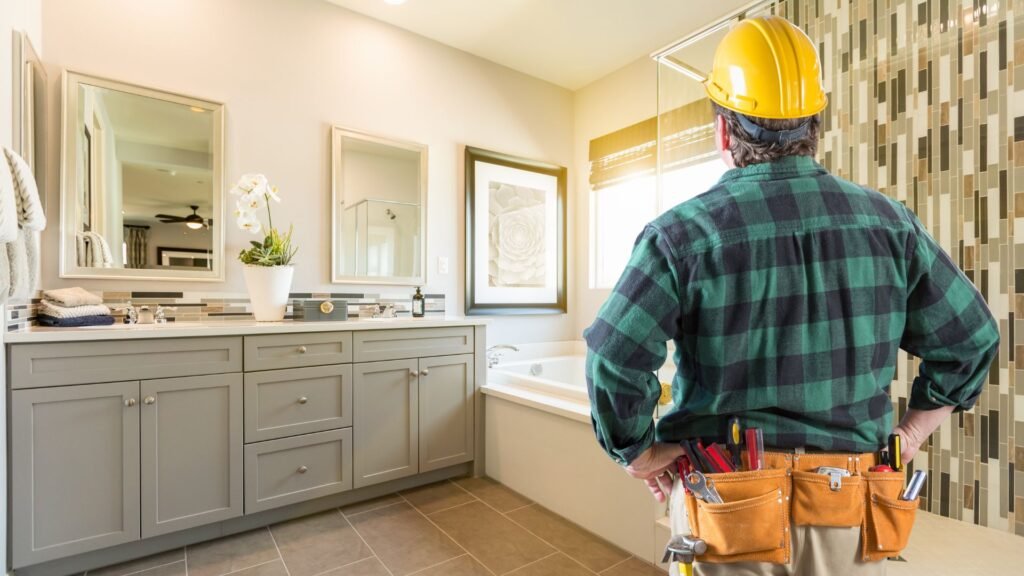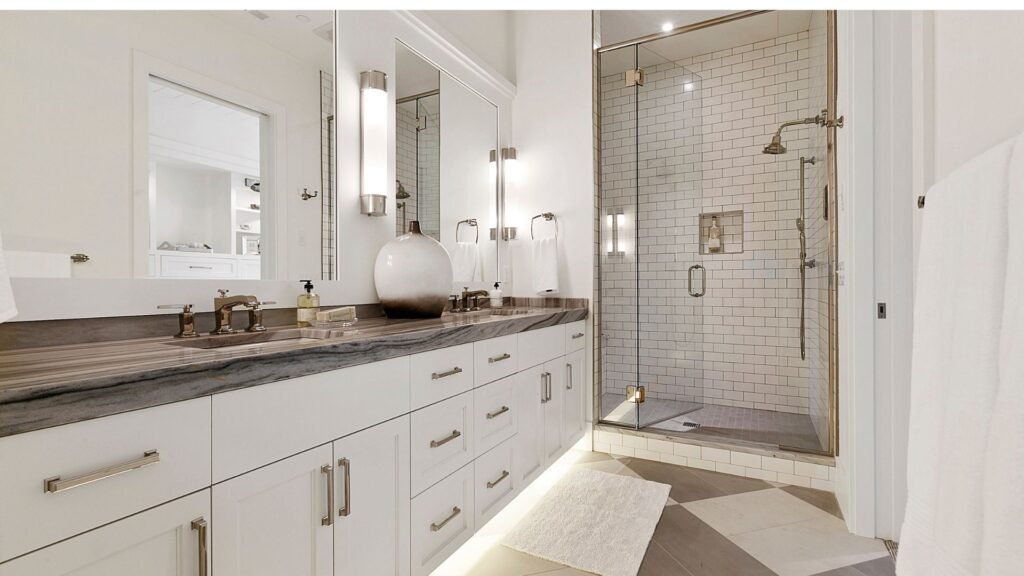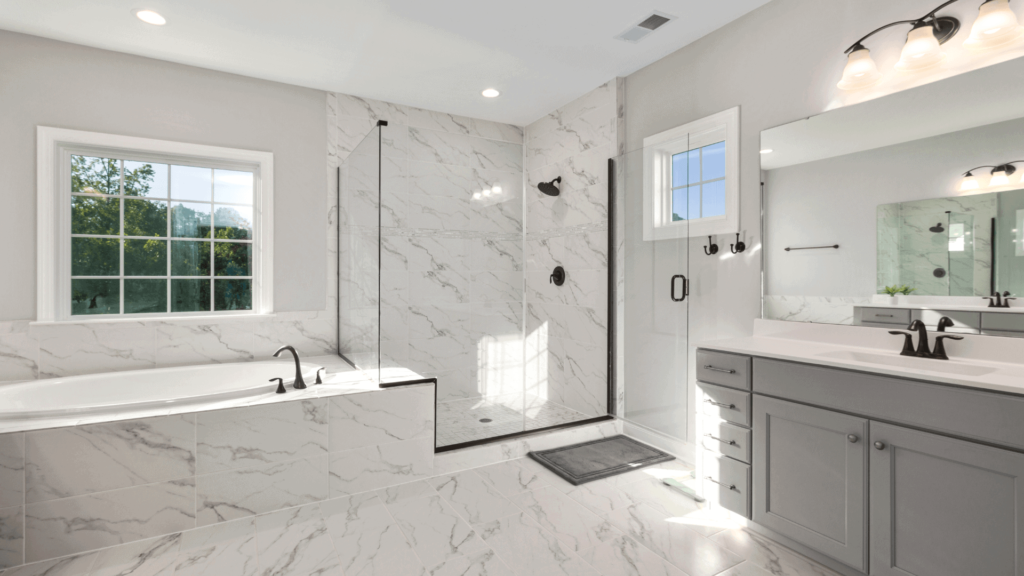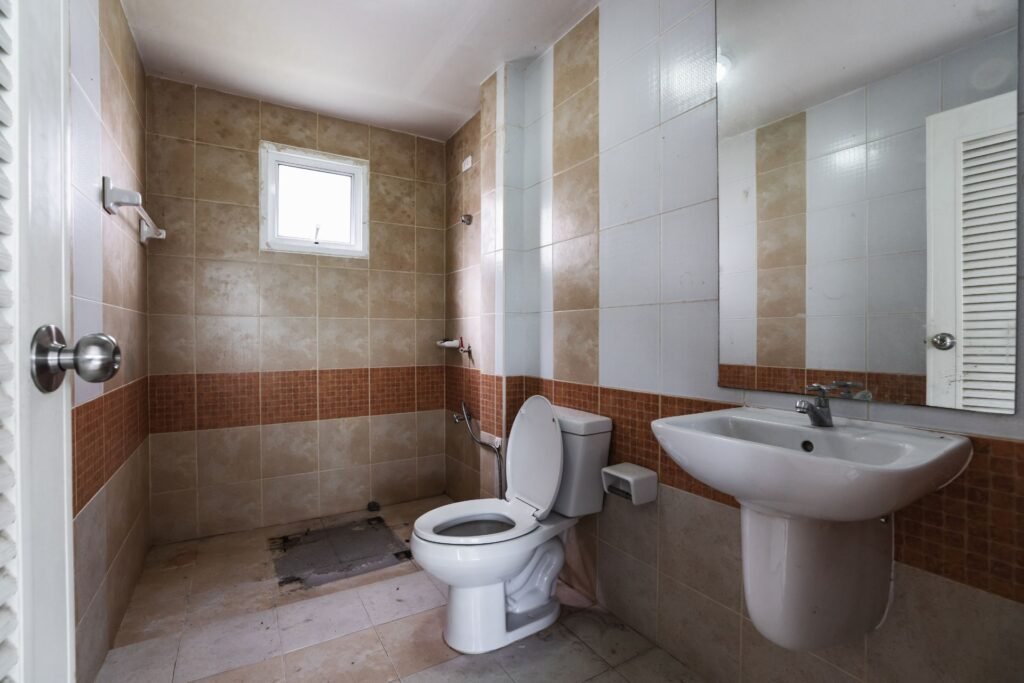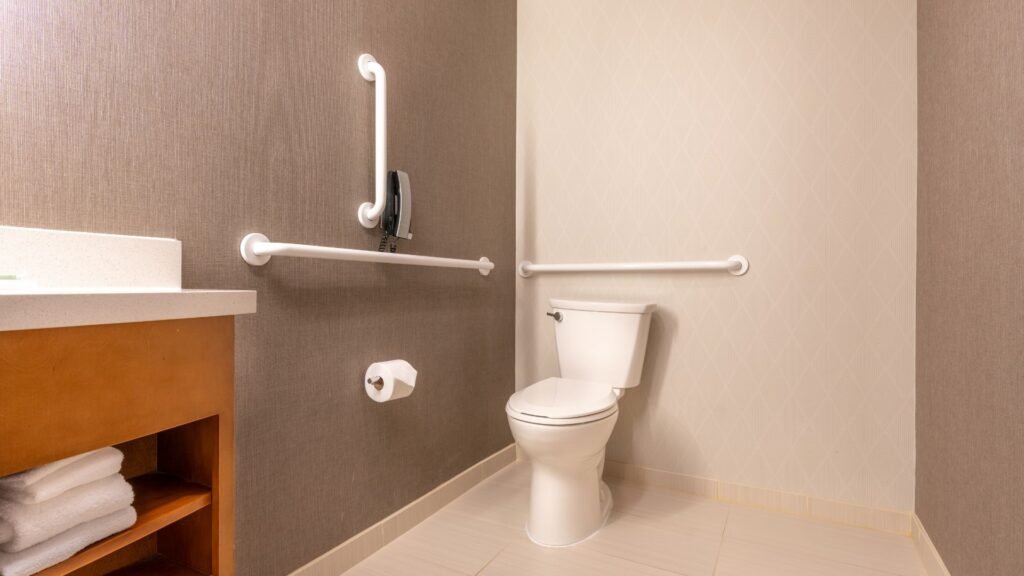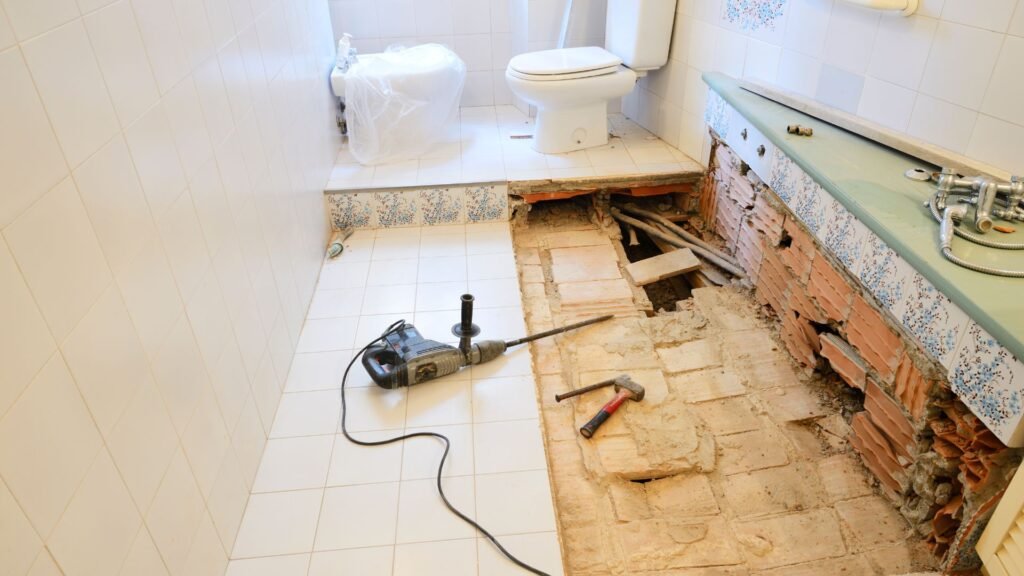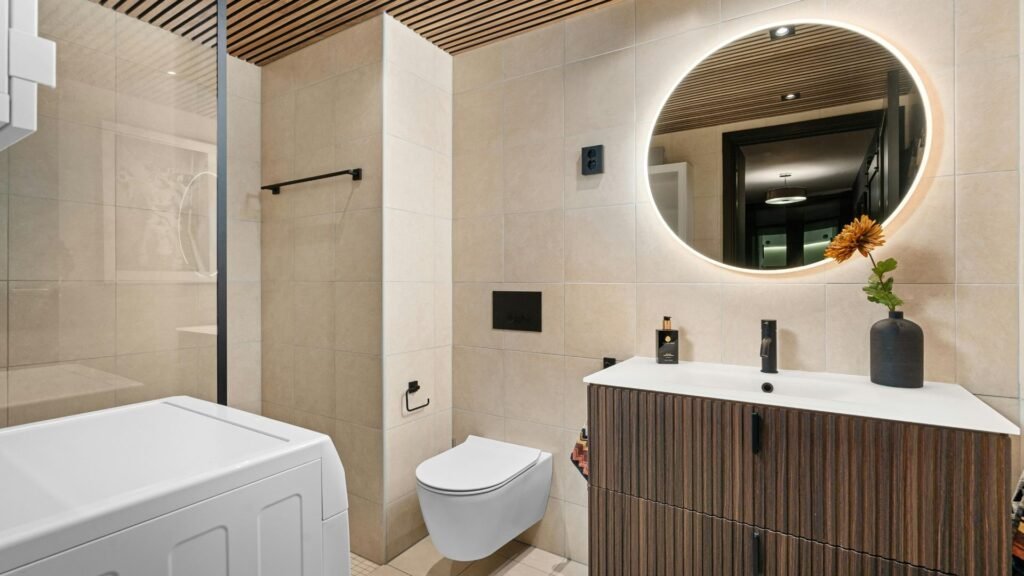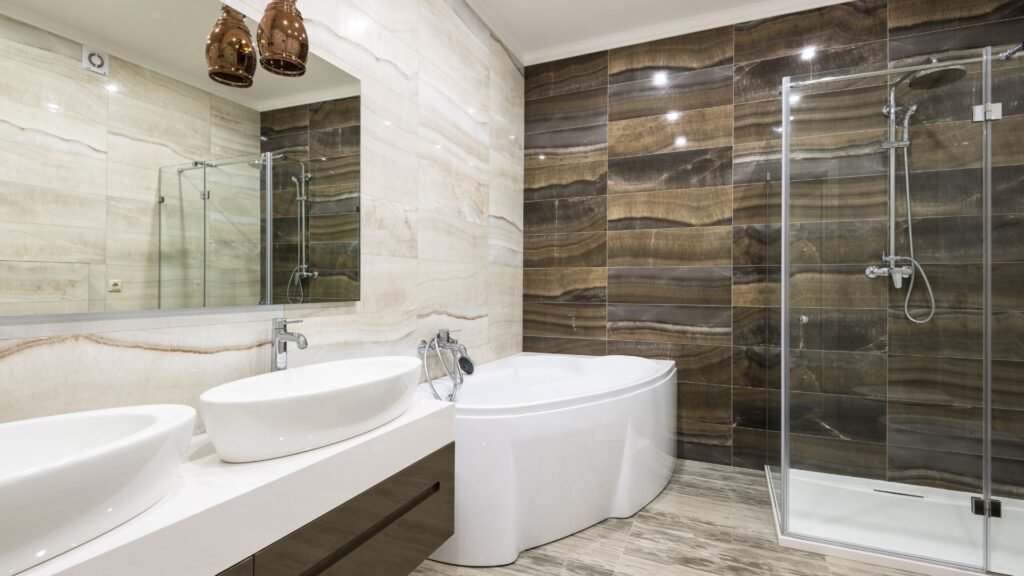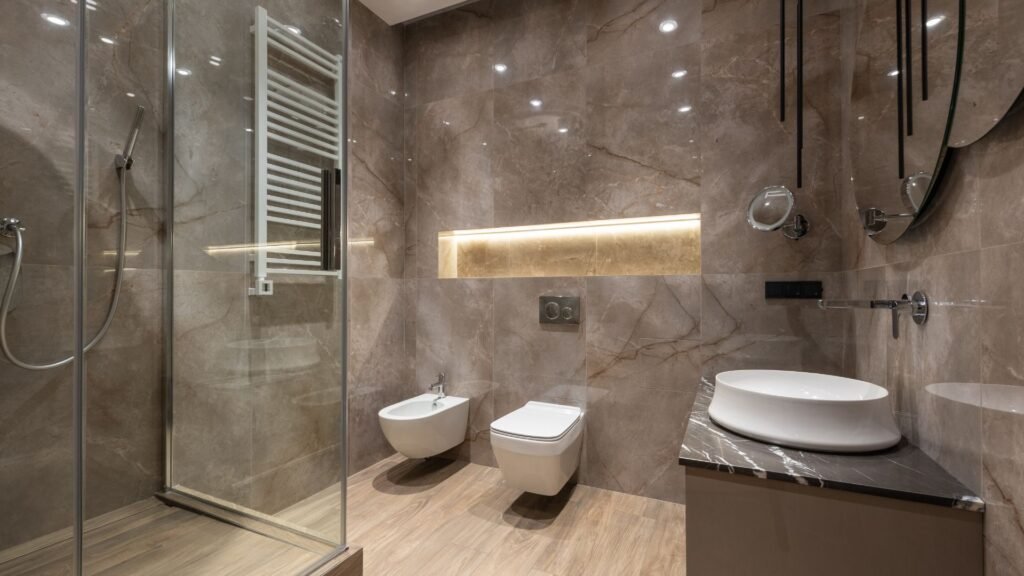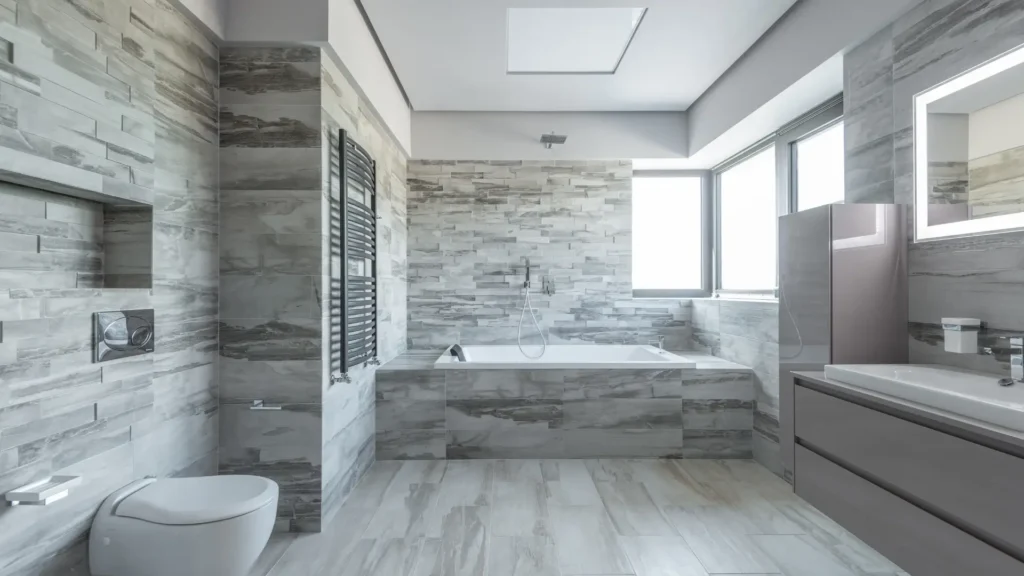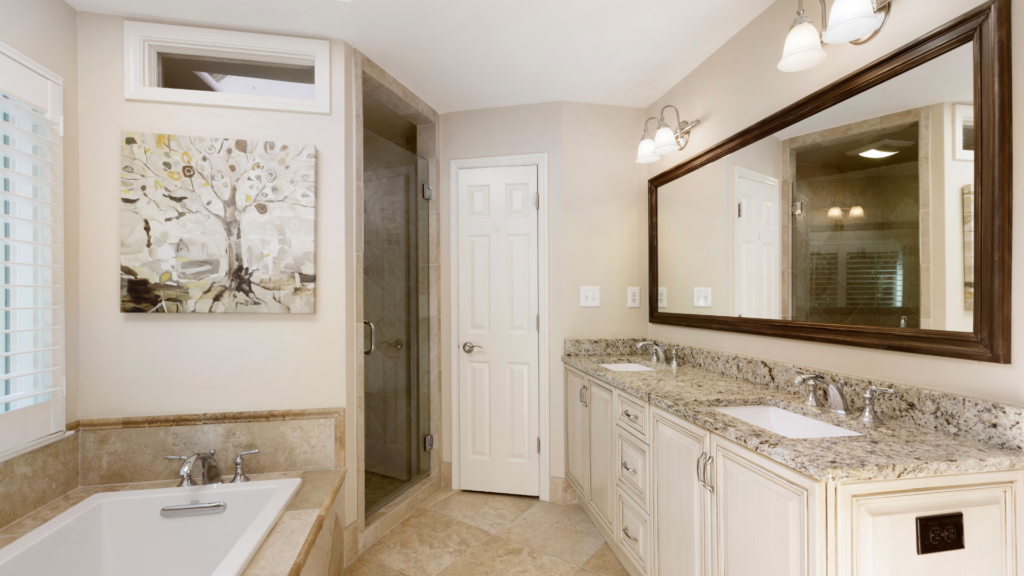Welcome to your go-to guide for fresh and practical bathroom renovation ideas tailored for NZ homes. Whether you’re tired of outdated tiles, cramped spaces, or just want a more relaxing and modern feel, this post will help you plan a space that suits your lifestyle and budget. We’ll walk through popular styles, clever storage solutions, eco-friendly upgrades, and smart renovation tips suited to New Zealand’s housing needs and climate. Whether you’re doing a full overhaul or just refreshing a few elements, you’ll find ideas here that can turn your bathroom into a more functional and enjoyable part of your home.
Upgrade your space with modern walk-in showers, freestanding tubs, heated floors, and stylish storage solutions. Choose from popular New Zealand styles like minimalist, coastal, or classic. Focus on smart layouts, energy-efficient fixtures, and local materials to create a functional, fresh bathroom that suits your lifestyle and budget.
- Why Renovating Your Bathroom In NZ Is Worth It
- Planning Your Bathroom Renovation
- Popular Bathroom Styles In NZ
- Top Bathroom Renovation Ideas To Consider
- Walk-In, Frameless Showers For A Sleek, Modern Look
- Freestanding Bathtubs For Visual Impact
- Heated Floors For Cold NZ Mornings
- Large-Format Tiles To Make Small Bathrooms Feel Bigger
- LED Mirror Lighting For Style And Functionality
- Wall-Hung Vanities To Create Space
- Built-In Shower Niches For Smart Storage
- Matte Black Or Brushed Brass Tapware For A Bold Contrast
- Smart Storage Solutions
- Eco-Friendly Options
- Budget-Friendly Renovation Tips
- What To Avoid In A Bathroom Renovation
- Hiring Local NZ Professionals Vs. DIY
- Final Touches That Make A Difference
- Before And After: Real NZ Bathroom Transformations
- FAQs: About Bathroom Renovation Ideas NZ
- How much does a bathroom renovation cost in NZ?
- Do I need building consent for a bathroom renovation in NZ?
- How long does a bathroom renovation take?
- Can I renovate a small bathroom without making it feel cramped?
- What are the most popular bathroom styles in NZ?
- What eco-friendly options can I include in my bathroom?
- Should I hire a professional or do it myself?
- What features add the most value in a bathroom renovation?
- How do I choose the right bathroom fittings?
- What should I avoid when renovating a bathroom?
- Conclusion
Why Renovating Your Bathroom In NZ Is Worth It
The Value It Adds To Your Home
Renovating your bathroom can instantly boost the appeal and overall value of your home. In New Zealand, buyers are often drawn to modern, functional bathrooms that don’t need extra work. Even a simple update, like new tiles, fixtures, or a better layout, can leave a strong impression during open homes. A well-renovated bathroom signals that the home has been cared for and maintained, which adds confidence for potential buyers. Whether you’re planning to sell soon or down the line, this one space can influence their final decision.
Better Energy And Water Efficiency With Modern Fixtures
Older bathrooms tend to have outdated taps, showerheads, and toilets that use more water and power than necessary. By updating your bathroom, you can switch to low-flow fixtures, dual-flush toilets, and energy-efficient lighting. These changes reduce your monthly utility bills and are better for the environment. In New Zealand, where sustainability is becoming more important to homeowners, these upgrades are not just smart, they’re expected. You’ll enjoy long-term savings while reducing your carbon footprint.
More Comfort, Better Storage, Improved Layout
Modern bathroom renovations are all about function and comfort. You can design a space that works better for your daily routine, whether that means adding a larger shower, better lighting, or more storage. Think of floating vanities, wall niches, and under-sink drawers that make it easier to stay organised. A good layout can also make a small bathroom feel spacious and less cluttered. If your current setup feels cramped or dated, even a few thoughtful changes can dramatically improve how the space feels and functions.
Brief Comment On Return On Investment (ROI) In The NZ Housing Market
Bathroom renovations often deliver a strong return on investment in the New Zealand housing market. While the exact ROI can vary, industry insights suggest that well-executed bathroom upgrades typically return 60-80% of their cost when selling. Buyers value bathrooms almost as much as kitchens, making it a high-impact area. Even if you’re not planning to sell, the improved functionality and daily comfort offer long-term value that pays off over time.
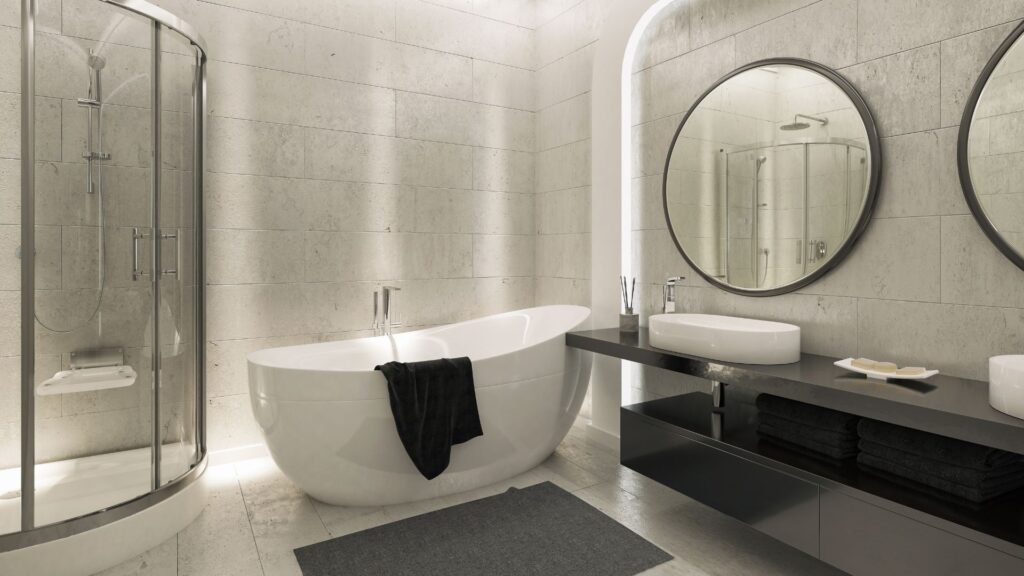
Planning Your Bathroom Renovation
Planning a bathroom renovation takes more than just picking out tiles and tapware. It’s about creating a functional, comfortable space that fits your lifestyle, budget, and the layout of your home. Whether you’re doing a small refresh or a full redesign, proper planning will save you time, stress, and money down the line. Here’s how to get started.
Start With Your Budget
Before you do anything else, set a realistic budget. This will guide every decision, from the materials you choose to the size of the project. A basic bathroom renovation in New Zealand typically starts around $10,000, but costs can climb quickly depending on the features you want. Always leave a buffer of around 10-15% for unexpected expenses, like water damage or plumbing surprises once walls are opened up. Knowing your budget upfront helps you stay on track and avoid overspending.
Identify Must-Haves Vs. Nice-To-Haves
Once your budget is in place, list out your essentials. These might include better storage, a new shower, or improved lighting. These are your must-haves, the features that will improve your daily use of the space. Then, make a separate list of nice-to-haves, like underfloor heating, designer tiles, or a freestanding tub. This helps you make smart decisions if you need to cut costs later. Focus first on what adds real value and comfort to your day-to-day routine.
Get Council Consent (If Needed In NZ)
Not every bathroom renovation needs consent, but some do, especially if you’re moving plumbing or making structural changes. For example, installing a new shower in a different location or modifying load-bearing walls will usually require approval. Each council in New Zealand has its own requirements, so it’s best to check early. Working without consent when it’s legally required can result in delays, fines, or problems when selling your home.
Choosing The Right Tradespeople (Builders, Plumbers, Tilers)
Hiring the right professionals is one of the most important parts of the renovation process. You’ll likely need a licensed plumber, a builder for structural work, and a tiler for finishing. Make sure each person is certified, experienced, and well-reviewed. Ask to see examples of previous work. Good tradespeople will not only deliver quality results, they’ll also help spot potential issues before they become costly mistakes. Communication is key, so choose people you feel comfortable working with.
Importance Of Getting Multiple Quotes
Never go with the first quote you get. Reach out to at least three contractors or service providers and compare their prices, timelines, and approach. Look beyond just the cost, cheaper isn’t always better. Pay attention to what’s included, how they handle variations, and whether they provide clear written estimates. This gives you a better sense of market rates and helps you choose someone who fits both your budget and your expectations.
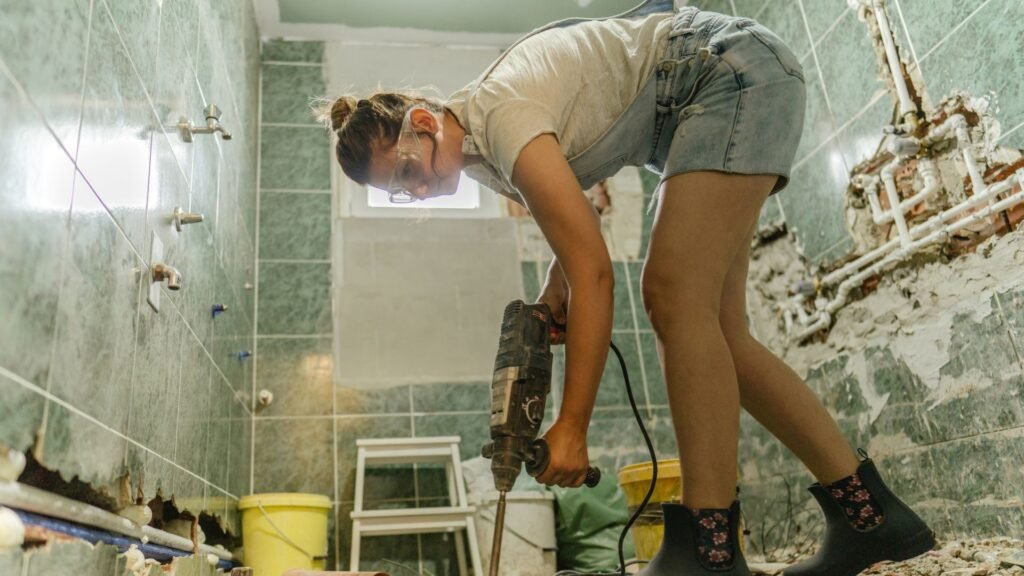
Popular Bathroom Styles In NZ
When renovating your bathroom in New Zealand, choosing a style that fits your home and lifestyle is just as important as selecting tiles or tapware. The right design can turn a basic space into something both functional and visually appealing. Below are four bathroom styles that continue to trend across NZ homes, from sleek, modern looks to more nostalgic, classic vibes.
Modern Minimalist
Modern minimalist bathrooms are perfect for homeowners who prefer clean lines, open spaces, and a clutter-free layout. This style often features:
- Wall-hung or floating vanities that create the illusion of space
- Frameless, walk-in showers for a streamlined look
- Neutral colour palettes like white, grey, and black
- Minimal décor, hidden storage, and flat-panel cabinetry
The goal is to keep everything simple, sleek, and functional. It’s an ideal choice for smaller NZ homes or apartments where space is limited, and every centimetre counts. You also get easier cleaning and a timeless design that won’t go out of date quickly.
Classic Heritage
If your home has character, especially a villa or bungalow, the classic heritage bathroom style can help retain its original charm. This look includes:
- Clawfoot or pedestal bathtubs as statement pieces
- Traditional-style tapware and fittings with intricate detailing
- Checkerboard or mosaic tile flooring
- Panelled walls, framed mirrors, and vintage lighting
This design brings warmth and elegance. It’s a good fit for older NZ homes where keeping a consistent style throughout the property can increase resale value. You can blend modern features like underfloor heating without losing the heritage feel.
Coastal Vibe
The coastal bathroom trend takes inspiration from NZ’s many beaches and bays. It’s all about creating a calm, airy environment that feels fresh and natural. This style usually features:
- Soft, natural colour tones like white, beige, and seafoam green
- Materials like timber, rattan, and textured tiles
- Open shelving and light-filled spaces
- Simple, breathable linen towels and light décor
You don’t need to live near the coast to use this style. It suits modern homes, family homes, and even rentals. Think of it as a way to bring a bit of summer into your everyday routine.
Scandinavian
Scandinavian bathrooms are known for their balance of style and function. This design is focused on simplicity, natural textures, and smart layouts. You’ll often find:
- Light wooden vanities or shelving
- Neutral colours like white, grey, and soft beige
- Large mirrors to bounce natural light
- Minimal décor with clean, geometric lines
This style works well in NZ homes because it prioritizes both aesthetics and practicality. It’s especially helpful for those renovating on a budget, as the materials are often easy to source, and the look is easy to maintain.
Choosing A Style That Works For You
The best bathroom style is the one that fits your home, lifestyle, and budget. Think about how you use the space every day, what colours make you feel relaxed, and which design will stay appealing over time. Whether you’re drawn to the clean feel of minimalist spaces or the charm of vintage details, there’s a bathroom style in NZ to suit your needs.
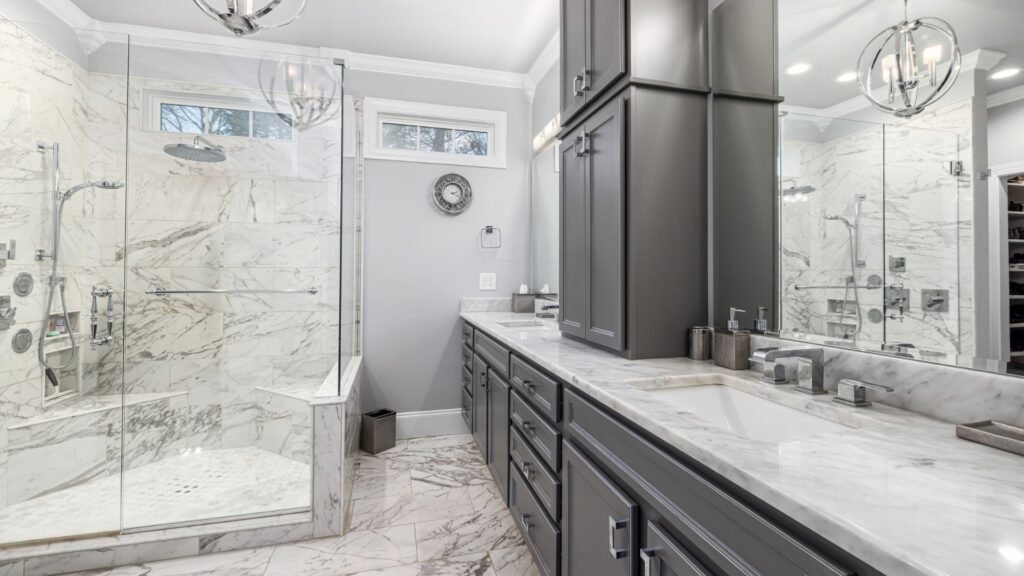
Top Bathroom Renovation Ideas To Consider
Upgrading your bathroom doesn’t have to be overwhelming. With the right design ideas and a bit of planning, you can create a space that’s functional, stylish, and adds long-term value to your home. Here are some of the most popular and practical bathroom renovation ideas New Zealand homeowners are embracing today.
Walk-In, Frameless Showers For A Sleek, Modern Look
Walk-in showers are a top choice in modern NZ homes. Frameless designs eliminate bulky edges and create an open, clean look that suits both small and large bathrooms. They’re easy to clean, visually light, and help your space feel more spacious. Go for clear glass to enhance natural light or frosted panels for privacy.
Freestanding Bathtubs For Visual Impact
A freestanding tub instantly turns an ordinary bathroom into a relaxing retreat. It’s a design feature that works well in both modern and classic homes. Whether you prefer a sleek oval tub or a clawfoot style, placing it strategically can make it the centrepiece of your bathroom. It’s perfect for those who enjoy long soaks and want to add a touch of luxury.
Heated Floors For Cold NZ Mornings
New Zealand winters can be chilly, and stepping onto a cold tile floor isn’t pleasant. Underfloor heating solves this problem. It provides even warmth, reduces condensation, and works well with most flooring types. It’s a subtle but game-changing upgrade that adds everyday comfort and appeal.
Large-Format Tiles To Make Small Bathrooms Feel Bigger
Using large tiles on floors and walls creates fewer grout lines, giving the illusion of a bigger space. This trick is especially useful in small bathrooms. Go for neutral tones like soft grey, beige, or white to make the room feel more open. Textured or matte finishes also add a modern touch without being slippery.
LED Mirror Lighting For Style And Functionality
LED mirrors offer more than just good lighting, they enhance the overall look and feel of your bathroom. They provide bright, even light that’s ideal for grooming, while also adding a modern design element. Some models include touch sensors, anti-fog features, and colour temperature controls.
Wall-Hung Vanities To Create Space
Wall-hung vanities keep the floor clear, which helps your bathroom look larger and more open. They also make cleaning easier. Choose a vanity with built-in drawers or cabinets to maximize storage without crowding the room. Floating styles are available in a range of materials to suit your preferred aesthetic.
Built-In Shower Niches For Smart Storage
Instead of using bulky corner shelves or hanging baskets, install a built-in shower niche. It provides a clean, permanent space to store shampoo, soap, and other essentials. You can match the tile for a seamless look or use contrasting colours to create a design feature.
Matte Black Or Brushed Brass Tapware For A Bold Contrast
Modern tapware finishes can completely change your bathroom’s vibe. Matte black and brushed brass are two popular choices that add personality without overpowering the space. They work well with both dark and light colour schemes, and pair beautifully with timber, stone, and tile surfaces.
Each of these ideas blends function with style and can be adapted to fit different budgets and spaces. Whether you’re doing a full bathroom makeover or just updating a few key elements, these suggestions can help you design a space that feels fresh, modern, and uniquely yours.

Smart Storage Solutions
Looking for ways to keep your bathroom tidy without sacrificing style? Smart storage can make a huge difference, especially in New Zealand homes where space is often limited. Whether you’re working with a compact ensuite or a larger family bathroom, using clever storage ideas helps maintain a clean, clutter-free space while making everything easy to access. Here are some popular and practical storage solutions worth considering.
Recessed Cabinets And Mirrored Vanities
Recessed cabinets are built directly into the wall, giving you storage without taking up extra space. They’re ideal for keeping everyday items like toothpaste, skincare, and medicine tucked away neatly.
Mirrored vanities combine two essential elements, mirror and storage, in one fixture. These are perfect for saving space while keeping your bathroom looking modern. They also reflect light, which helps smaller bathrooms feel bigger and brighter.
Floating Shelves Vs. Built-In Shelving
Floating shelves are easy to install and great for displaying towels, baskets, or decor. They don’t take up floor space and can be placed at any height. You can choose wood or glass finishes to match your bathroom’s style.
Built-in shelving, on the other hand, is more permanent but adds a clean, custom look. It’s especially useful in alcoves or shower areas. While it takes more planning, it often results in more storage that blends seamlessly with your layout.
Under-Sink Storage Hacks
The space under your sink often goes unused. You can add pull-out drawers, small baskets, or even custom shelving to make it functional. If your vanity has open space below, place attractive bins or boxes to store cleaning supplies, extra toiletries, or spare toilet paper rolls.
Also, look for vanities that include built-in drawers with sections. These make it easier to organize smaller items like makeup, hair tools, or grooming gear.
Space-Saving Ideas For Small Bathrooms
If you’re short on square metres, every inch counts. Use over-the-door hooks for towels or robes. Add slim cabinets above your toilet for items like wipes, air freshener, or spare hand towels. Magnetic strips inside cabinet doors can hold tweezers, scissors, or nail clippers.
Consider fold-down or multi-use furniture like a mirror that doubles as a cabinet, or a towel ladder that also holds baskets. These types of solutions help reduce clutter without overwhelming a small layout.
By making smart storage part of your renovation plan, you’ll create a bathroom that’s easier to live in and easier to clean. Every storage choice should match your needs while keeping the space practical and visually appealing. Think beyond the obvious, and don’t let an inch go to waste.
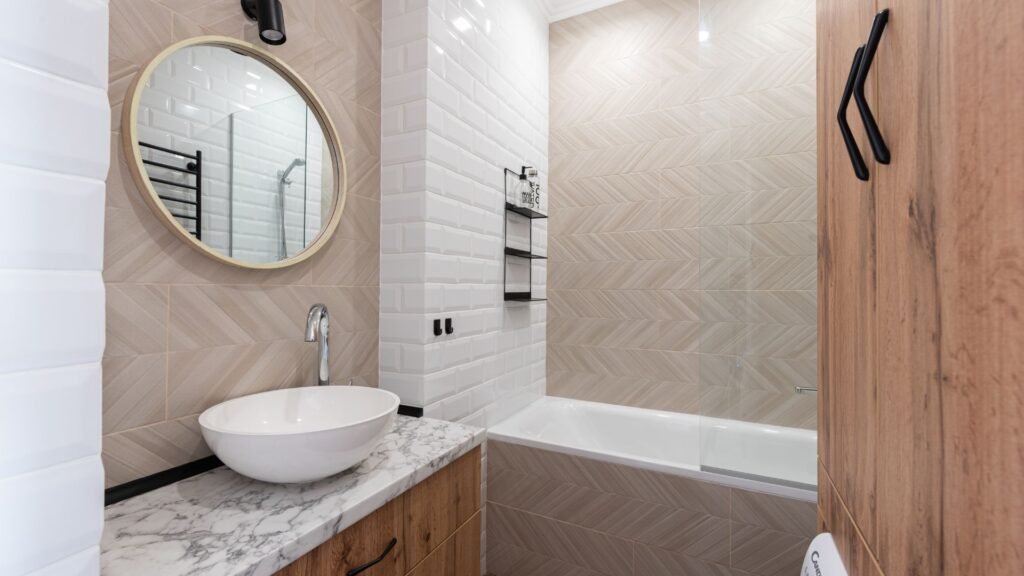
Eco-Friendly Options
Making your bathroom more eco-friendly isn’t just good for the environment, it also saves money over time. Whether you’re doing a full renovation or small upgrades, there are several simple ways to reduce water and energy use without sacrificing comfort or style. Below are smart, sustainable options that work well for New Zealand homes.
Low-Flow Shower Heads And Dual Flush Toilets
Standard showers and toilets can waste a huge amount of water every day. Installing a low-flow shower head reduces water usage while maintaining good pressure, making showers feel just as satisfying. Modern designs are sleek, affordable, and easy to install.
Dual flush toilets give you two flushing options, one for liquid waste and another for solids. This small feature can cut water use by thousands of litres per year. It’s a simple upgrade that pays off quickly in lower water bills.
Recycled Or Sustainable Materials
Choosing eco-friendly materials helps reduce the environmental footprint of your renovation. Bamboo is a popular sustainable option. It grows quickly and works well for vanities, shelving, and even flooring. Reclaimed wood adds warmth and character to any space while keeping usable materials out of landfills.
You can also look for tiles made from recycled glass or ceramics. These options support a circular economy while still offering strong design choices.
Water-Efficient Tapware
Not all taps are equal. Many modern tapware brands offer water-efficient models with built-in flow restrictors. These regulate how much water is released without compromising pressure or performance. In New Zealand, you can check for the WELS rating (Water Efficiency Labelling Scheme) when shopping for taps.
Look for mixers and basin taps that are rated 4 stars or above. This is especially helpful for busy households where taps get regular use throughout the day.
Energy-Efficient Underfloor Heating And Lighting
Heating is essential in many parts of NZ, especially during colder months. Traditional systems can use a lot of energy, but modern underfloor heating systems are much more efficient. They evenly distribute warmth and can be connected to programmable thermostats to avoid wasted energy.
LED lighting is another must-have. LEDs use up to 80% less electricity than traditional bulbs and last far longer. They’re ideal for task lighting around mirrors, ambient lighting in the ceiling, or under-cabinet accents.
Choosing eco-friendly bathroom features doesn’t mean giving up comfort or style. With the right upgrades, you can create a warm, modern, and efficient space that lowers your bills and reduces your environmental impact. Whether you’re planning a full renovation or looking to make small changes, starting with these sustainable ideas is a smart move.
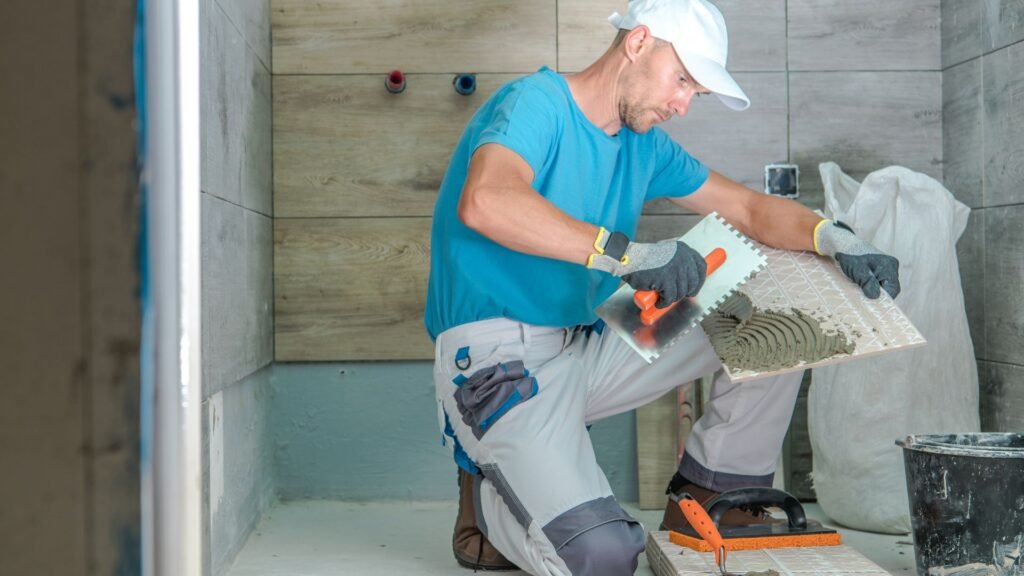
Budget-Friendly Renovation Tips
Renovating your bathroom doesn’t have to drain your savings. With the right approach, you can achieve a fresh, updated look without spending more than you need to. If you’re working with a modest budget, the tips below will help you get the most value out of every dollar, without cutting corners or sacrificing style. These budget-friendly bathroom renovation ideas are especially useful for New Zealand homeowners looking for practical, cost-saving solutions.
Refresh Tiles With Resurfacing Instead Of Replacing
Old or stained tiles can make your bathroom look tired, even if everything else is in good shape. Instead of removing and replacing all your tiles, consider resurfacing them. This process involves applying a durable coating over the existing tiles, giving them a clean and modern appearance. It’s quicker, less messy, and far more affordable than a full replacement, especially if you’re happy with the existing layout.
Paint Walls Instead Of Full Tiling
Tiling from floor to ceiling can get expensive fast. If you’re on a budget, you can save a significant amount by limiting tile use to high-moisture areas, like the shower or splashback, and painting the rest. Use moisture-resistant paint designed for bathrooms to protect your walls and keep them looking fresh. With the right colour choice, painted walls can create a light, spacious feel without the high cost.
Replace Fixtures (Taps, Handles, Lights) For A Quick Update
Sometimes it’s the small details that make the biggest difference. Swapping out old taps, cabinet handles, or outdated light fixtures can instantly modernise the space. Choose finishes like matte black, brushed nickel, or chrome for a more contemporary look. You don’t need to change everything, just a few strategic upgrades can give your bathroom a whole new feel.
Shop Around For End-Of-Line Stock Or Trade Discounts
You don’t always have to buy the latest product lines at full price. Many NZ suppliers offer discounts on end-of-line or clearance stock. These are often brand-new items that have been discontinued or overstocked. You can also check trade suppliers or outlets that offer discounts to the public. It might take a bit more time to hunt for deals, but the savings can be well worth it.
DIY Options For Those Comfortable With Tools
If you’re confident with basic tools and measurements, there are plenty of tasks you can do yourself. Replacing towel rails, painting, assembling vanities, or installing shelves can all be done without professional help. Just be careful not to tackle plumbing or electrical work unless you’re licensed, NZ regulations are strict for a reason. Still, handling smaller tasks yourself can shave hundreds off your renovation bill.
A stylish, functional bathroom doesn’t have to cost a fortune. With thoughtful planning and a few smart choices, you can update your space without overspending. Focus on high-impact, low-cost improvements and look for savings wherever possible. Renovating on a budget is not only achievable, it can also be deeply satisfying when you see the results of your smart decisions come to life.
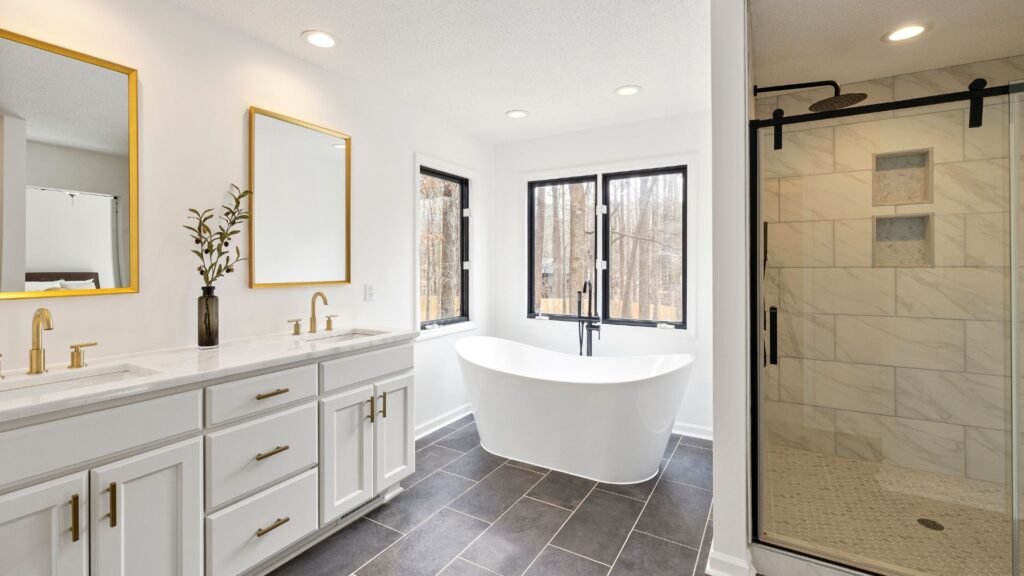
What To Avoid In A Bathroom Renovation
Renovating your bathroom is a big investment, so it’s important to avoid common mistakes that can lead to higher costs, wasted time, or long-term issues. Whether you’re planning a simple upgrade or a full remodel, watching out for these pitfalls will help you create a space that looks good, works well, and lasts for years.
Poor Ventilation (Leading To Mould Issues)
Good airflow isn’t just about comfort, it protects your bathroom from moisture damage. Without proper ventilation, steam and humidity get trapped, leading to mould, mildew, and peeling paint. Over time, this can damage walls, ceilings, and cabinetry. Always install an extractor fan that meets NZ standards and keep windows open when possible to allow fresh air to circulate.
Overcrowding Small Spaces With Bulky Fittings
Trying to fit everything into a small bathroom often backfires. Oversized vanities, baths, or storage units can make the room feel cramped and uncomfortable. Instead, choose space-saving fixtures like wall-hung toilets or vanities and corner showers. A clean, open layout makes a small bathroom more functional and visually spacious.
Ignoring Waterproofing And Drainage
This is one of the biggest renovation mistakes you can make. Poor waterproofing leads to leaks, dampness, and structural damage, which are expensive to fix. In New Zealand, bathroom waterproofing must meet strict building code standards. Always hire a licensed professional and check that they provide a CodeMark-certified waterproofing system. Also, make sure the drainage is designed to carry water away efficiently, especially in showers and wet areas.
Cheap Fittings That Won’t Last
Cutting costs on tapware, showerheads, or tiles might seem like a good idea during planning, but cheap materials often wear out quickly. You’ll end up spending more on repairs or replacements. Invest in mid-to-high quality fittings from trusted brands. Look for products with solid warranties and local support.
Choosing Style Over Function
It’s easy to get carried away with design trends, but don’t sacrifice practicality. A beautiful bathroom that lacks storage, is hard to clean, or doesn’t suit your family’s needs will quickly become frustrating. Focus on creating a space that’s both stylish and usable. Think about daily routines, the number of users, and future-proofing for resale or aging in place.
Avoiding these issues can save you money, stress, and regret. A successful bathroom renovation balances smart planning, reliable materials, and thoughtful design choices. Always work with experienced tradespeople, plan for the long term, and prioritize what works for your home, not just what looks good online.
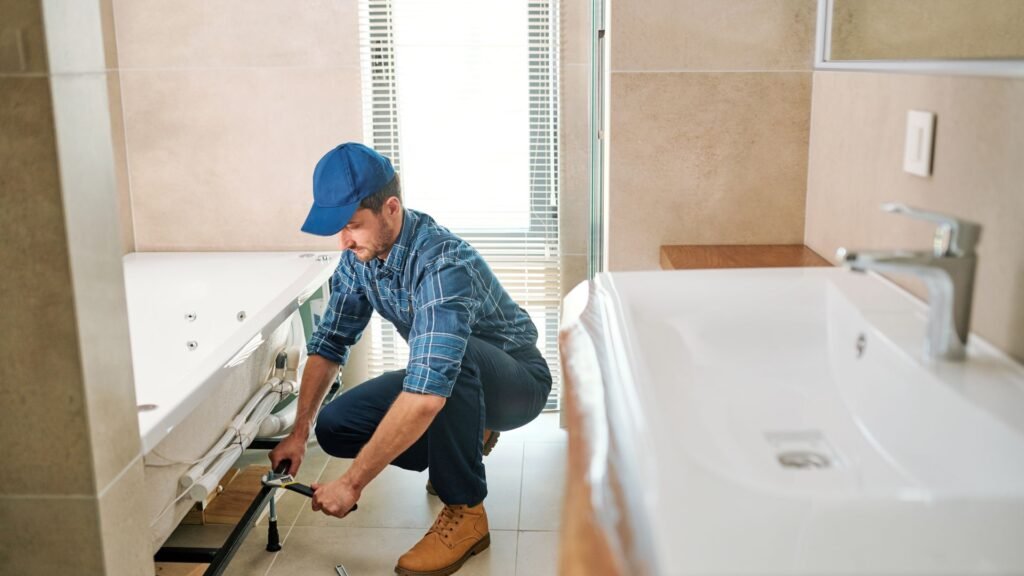
Hiring Local NZ Professionals Vs. DIY
Renovating your bathroom in New Zealand comes with big decisions, one of the biggest is whether to do it yourself or hire local professionals. Getting this choice right can save you time, money, and a lot of frustration. Let’s break down when it’s best to call in the experts, what you can safely handle yourself, and how to make smart hiring decisions that fit your budget and timeline.
When To Call The Pros (Plumbing, Waterproofing, Electrical)
Some jobs in a bathroom renovation are too important, or too risky, to tackle on your own. In New Zealand, plumbing, waterproofing, and electrical work are strictly regulated for safety reasons. These tasks require licensed professionals to ensure everything meets NZ Building Code standards.
Plumbing must be handled correctly to avoid leaks, water damage, and legal issues. Waterproofing is just as important, if done incorrectly, moisture can seep into walls and floors, causing mould and long-term structural problems. Electrical work is another area where safety can’t be compromised. Installing lights, switches, or underfloor heating should always be left to certified electricians.
Even if you’re confident in your skills, hiring professionals for these areas protects your home, keeps your insurance valid, and ensures compliance with local regulations.
What DIY Jobs Are Usually Safe (Painting, Accessories)
Not everything requires a tradesperson. There are plenty of bathroom updates you can confidently do yourself to save on labour costs.
Painting is one of the easiest and most budget-friendly DIY jobs. Just make sure to use mould-resistant paint and properly prepare your surfaces. You can also install accessories like towel racks, toilet roll holders, and floating shelves. These small touches can make a big difference in both style and function.
Changing out vanity handles, mirrors, or basic light fittings (if no wiring is involved) are other DIY-friendly upgrades. If you’re handy with tools and follow safety precautions, these tasks are perfect for weekend projects.
Just be realistic about your skill level. A poor DIY job can lead to more costs later if it needs to be redone professionally.
How To Check Qualifications And Reviews In NZ
Hiring the right people means doing a bit of homework first. Start by checking if your builder, plumber, or electrician is licensed. You can verify this through the Licensed Building Practitioners (LBP) register or the Electrical Workers Registration Board.
Next, look at reviews and testimonials. Google Reviews, Builderscrack, or NoCowboys are popular in NZ for checking trade feedback. Look for consistent praise around reliability, timeliness, and communication, not just a few five-star reviews.
Ask for examples of recent work or request references from past clients. A trustworthy professional won’t hesitate to share their portfolio or put you in touch with happy customers.
It’s also a good idea to ask about insurance and guarantees. A professional who’s insured gives you peace of mind if something goes wrong.
Working With Local Suppliers For Faster Delivery
Using local suppliers for your fixtures, tiles, and fittings can speed up your renovation process and reduce headaches. When you order from within NZ, you’re more likely to get what you need without long delays or import fees.
Local showrooms also let you see products in person, which helps you make better design decisions. You can feel the texture of tiles, test the comfort of bathtubs, and compare finishes side by side.
Many NZ suppliers work directly with tradespeople, meaning easier coordination, better deals, and smoother scheduling. If there’s an issue with stock or delivery, resolving it locally is faster than dealing with overseas companies.
By choosing local, you’re also supporting Kiwi businesses and trades, which is always a win.
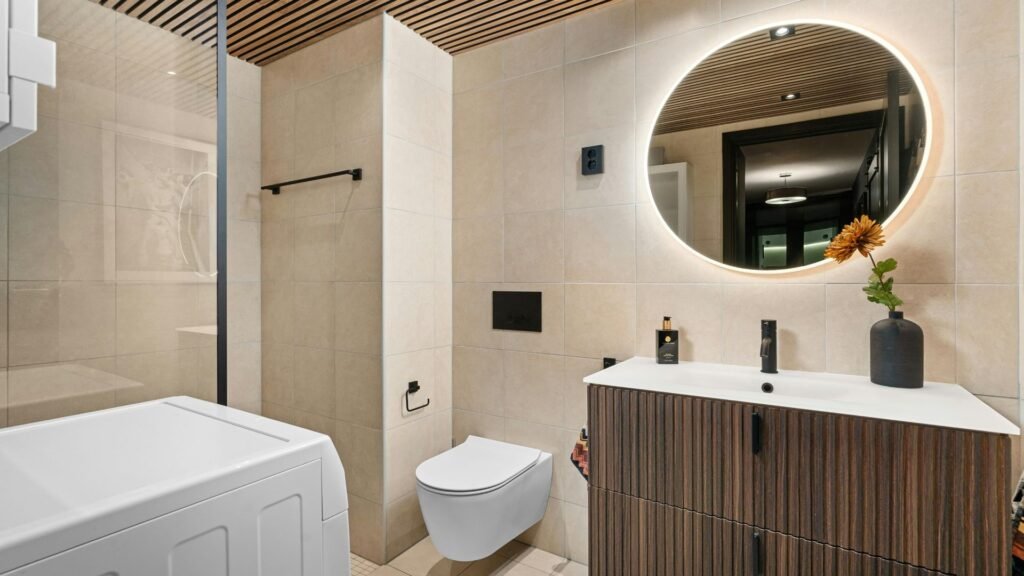
Final Touches That Make A Difference
Once the major parts of your bathroom renovation are done, it’s time to focus on the finishing touches. These small details may seem minor, but they have a big impact on the overall look and feel of your space. The right final touches can turn a good bathroom into a space that feels polished, welcoming, and uniquely yours.
Plants For A Fresh, Clean Vibe
Adding plants is one of the easiest ways to bring life into your bathroom. They help purify the air, add a splash of green, and create a calming environment. Choose moisture-loving plants like ferns, peace lilies, or snake plants that thrive in the humid bathroom climate. If you’re tight on space, go for hanging planters or small potted plants on open shelves.
Scented Candles Or Diffusers
A pleasant scent can completely change how your bathroom feels. Scented candles and essential oil diffusers add a spa-like atmosphere and help eliminate unwanted odors. Lavender, eucalyptus, and citrus are popular choices in New Zealand homes. Use scents that match your style, soft and floral for a relaxing space, or clean and citrusy for a fresh, energizing feel.
Towel Warmers And Stylish Hooks
Towel warmers are more than a luxury, they’re practical, especially during cold NZ winters. Warm towels feel comforting after a shower and also help keep your bathroom drier and mould-free. Pair them with stylish towel hooks or rails that match your tapware and other fittings. This creates a cohesive look while adding everyday convenience.
Matching Accessories (Soap Dispensers, Bins, Etc.)
Coordinated bathroom accessories can pull your whole design together. Matching soap dispensers, toothbrush holders, bins, and storage containers create a clean and tidy look. Stick to a consistent colour or material, like matte black, brushed nickel, or natural stone, to maintain visual balance. Avoid random mixes that make the space feel cluttered.
Art And Decor That Suits Your Theme
Adding art or decorative touches personalizes your bathroom and makes it feel like part of your home. Choose moisture-resistant prints, framed photography, or simple wall art that reflects your style. If your theme is coastal, think beach photography or shells. For a minimalist design, go with abstract pieces or neutral tones. Keep it simple and avoid overloading the space.
These final touches don’t require a big budget, but they can dramatically improve how your bathroom looks and feels. Whether you’re aiming for comfort, elegance, or a clean modern look, finishing details are where your personality really shines through. Don’t skip this step, it’s what makes the difference between a basic bathroom and one that feels truly finished.
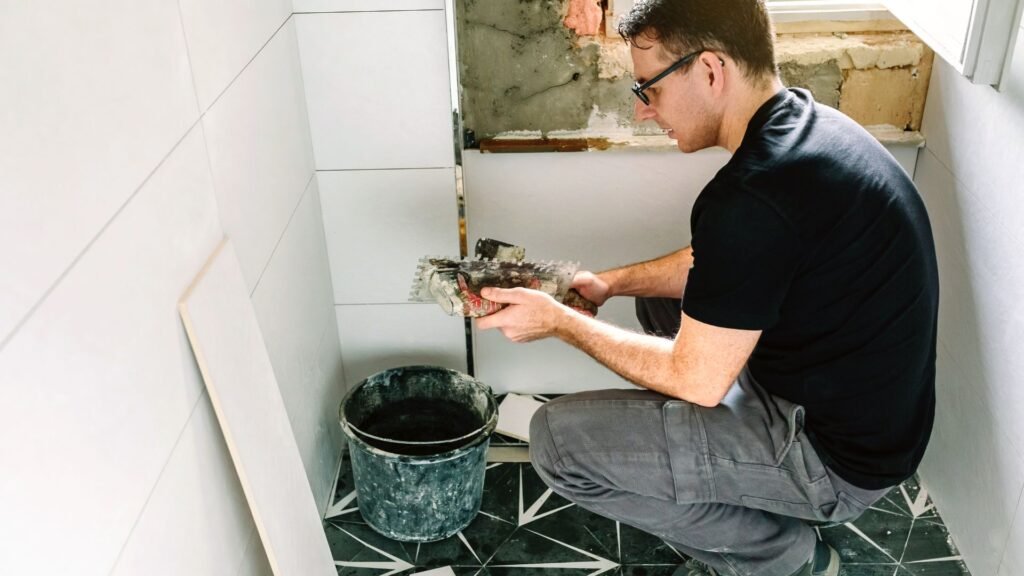
Before And After: Real NZ Bathroom Transformations
When you’re planning a bathroom renovation, it helps to see what’s possible. Real-life examples from NZ homes can inspire your own ideas and give you a better sense of what works, what doesn’t, and where you might want to invest your money. Here are two transformation stories that show how small and large updates can completely change the look and feel of a bathroom.
Family Bathroom In Auckland: From Dated To Bright And Practical
A young family living in a 1980s Auckland home wanted to update their tired bathroom, which had outdated tiles, a bulky built-in tub, and limited storage. The space felt dark, cramped, and wasn’t meeting their day-to-day needs.
What they changed
- Removed the old tub and replaced it with a walk-in frameless glass shower
- Installed a wall-hung vanity with deep drawers for more storage
- Switched to large-format white tiles to brighten the space
- Added underfloor heating and LED lighting for comfort and visibility
Why it worked
Removing the bulky tub freed up floor space, making the room feel larger. The new layout focused on function, with plenty of storage and easy-to-clean finishes. The added lighting and heating brought comfort without going over budget.
Lessons learned
Simple design choices and smart storage can make even small bathrooms feel open and modern. Prioritizing what the family actually needed helped them stay within budget while improving everyday use.
Villa Renovation In Christchurch: Mixing Modern With Classic
In a restored Christchurch villa, the owners wanted to keep some of the traditional charm while bringing in modern features. The bathroom still had its original clawfoot tub and mosaic tile floor, but the plumbing was old, the layout was awkward, and the space lacked functionality.
What they changed
- Replumbed and waterproofed the entire room to meet current standards
- Restored the clawfoot tub but paired it with a modern walk-in shower
- Added a floating timber vanity with brushed brass tapware
- Updated the lighting to include dimmable wall sconces and a large skylight
Why it worked
By blending old and new, the space kept its character while gaining modern comforts. The shower brought convenience, while the restored tub served as a focal point. The timber vanity added warmth and tied the style together.
Lessons learned
You don’t need to choose between style and function. Keeping heritage details while updating the essentials can create a timeless bathroom that works for today’s lifestyle.
These examples show that thoughtful planning, clear goals, and the right tradespeople can make all the difference. Whether you’re doing a full overhaul or working with what you have, there’s always a way to improve your bathroom in a way that suits your home and your life.
Thinking about upgrading your bathroom? Whether you’re starting small or planning a full renovation, we’re here to help. Our website is packed with practical tools, expert insights, and inspiration tailored for NZ homeowners. You’ll find everything from layout ideas and fixture tips to advice on hiring reliable trades.
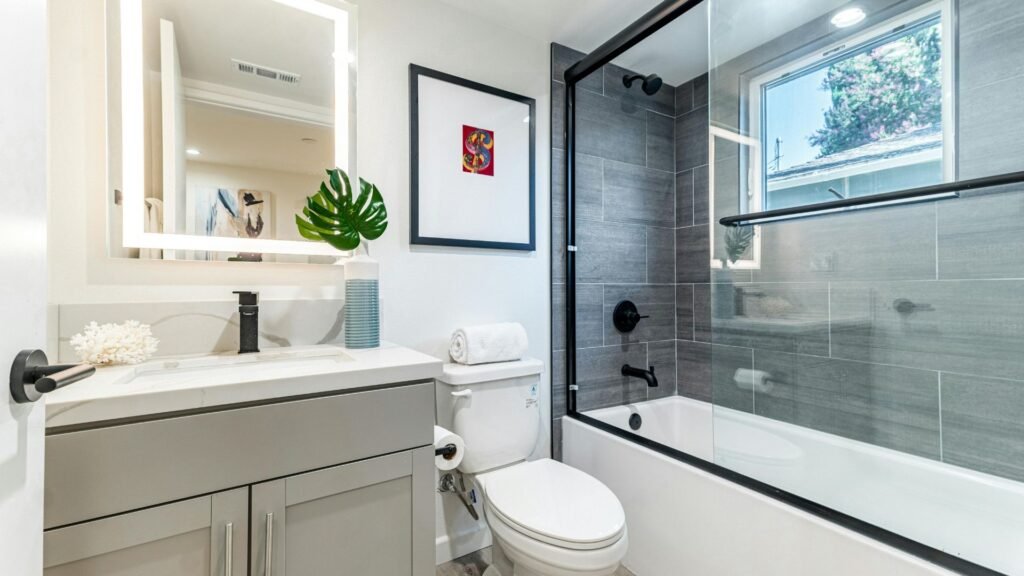
FAQs: About Bathroom Renovation Ideas NZ
How much does a bathroom renovation cost in NZ?
Bathroom renovation costs in NZ typically range from $10,000 to $30,000, depending on the size, materials, labour, and scope of work. A simple refresh may cost less, while full renovations with premium fittings can go beyond that range.
Do I need building consent for a bathroom renovation in NZ?
You usually don’t need consent for cosmetic changes like painting or replacing fittings. But you will need building consent if you’re altering plumbing layouts, structural elements, or waterproofing systems. Always check with your local council.
How long does a bathroom renovation take?
Most bathroom renovations in NZ take 2 to 4 weeks from demolition to completion. Timelines depend on availability of trades, materials, and the complexity of the design.
Can I renovate a small bathroom without making it feel cramped?
Yes. Use space-saving fixtures like wall-hung vanities and frameless showers. Choose light colours, large-format tiles, and smart storage solutions to create a more open feel.
What are the most popular bathroom styles in NZ?
Common styles include modern minimalist, coastal, Scandinavian, and classic heritage. Each style suits different home types, from city apartments to older villas.
What eco-friendly options can I include in my bathroom?
You can install low-flow showerheads, dual flush toilets, LED lighting, and use sustainable materials like bamboo or recycled timber. These reduce water and power usage while maintaining comfort.
Should I hire a professional or do it myself?
You can DIY basic tasks like painting or installing shelves. But for plumbing, electrical, and waterproofing work, hire licensed professionals to meet NZ building standards and avoid costly mistakes.
What features add the most value in a bathroom renovation?
High-quality fixtures, modern layouts, heated flooring, good lighting, and neutral design elements tend to add the most value, especially if you’re renovating for resale.
How do I choose the right bathroom fittings?
Start with function first, choose fittings that match your water pressure, usage, and budget. Then consider style, finish, brand reputation, and warranty. Visit local showrooms to see options in person.
What should I avoid when renovating a bathroom?
Avoid poor ventilation, cheap fixtures, overcomplicating small spaces, and ignoring waterproofing. These mistakes can lead to mould, damage, or future repair costs.
Conclusion
Renovating your bathroom doesn’t have to feel overwhelming, just taking the first step can lead to a space that’s more comfortable, functional, and tailored to your lifestyle. Whether you’re doing a full renovation or making a few small upgrades, planning ahead, setting a realistic budget, and getting multiple quotes will help you stay on track. Even simple changes like updating fixtures, adding better lighting, or improving storage can make a noticeable difference without a massive spend. Use the ideas in this guide to spark your creativity, and don’t be afraid to explore local NZ suppliers or talk to professionals for advice. For more help, check out our related guides on bathroom layout tips, product recommendations, and budget-friendly upgrades that suit New Zealand homes.
About the Author:
Mike Veail is a recognized digital marketing expert with over 6 years of experience in helping tradespeople and small businesses thrive online. A former quantity surveyor, Mike combines deep industry knowledge with hands-on expertise in SEO and Google Ads. His marketing strategies are tailored to the specific needs of the trades sector, helping businesses increase visibility and generate more leads through proven, ethical methods.
Mike has successfully partnered with numerous companies, establishing a track record of delivering measurable results. His work has been featured across various platforms that showcase his expertise in lead generation and online marketing for the trades sector.
Learn more about Mike's experience and services at https://theleadguy.online or follow him on social media:

